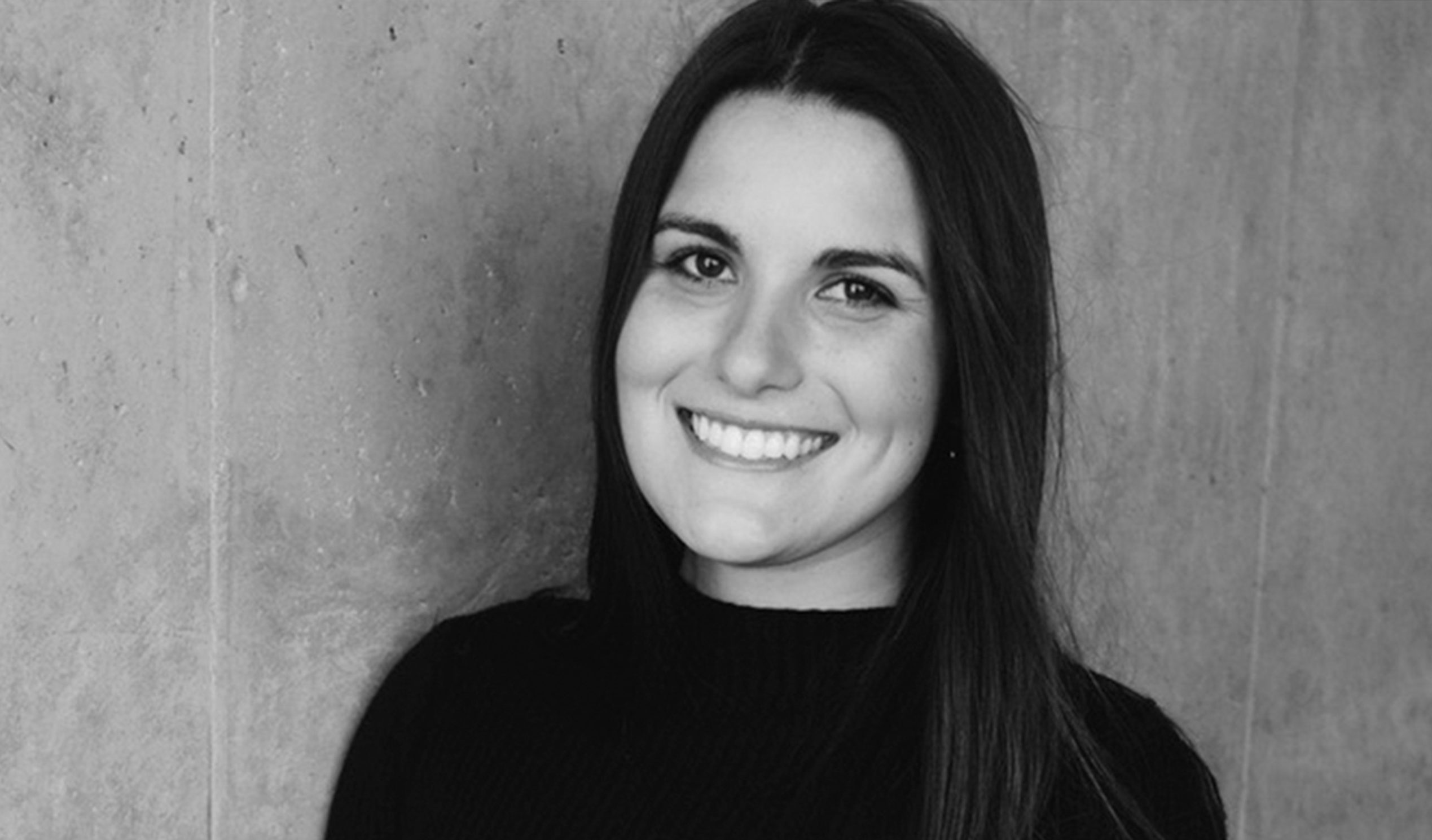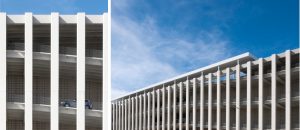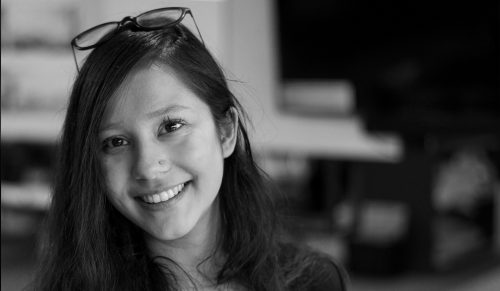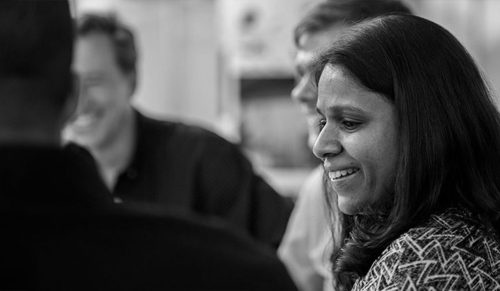
Inspiring Design: Interviews with BNIM Women in Design – Part 2
In our daily work, we often look to our colleagues and collaborators as we seek out and share inspiration. Our team members at BNIM approach our work with collective care, each bringing expertise, talents, and passions to create the best outcomes and a better practice. As we honor Women’s History Month this March, we are excited to share the stories from several individuals at BNIM who inspire and energize our firm each day. In this Inspiring Design series, we connect with Beena Ramaswami, Hannah Gray, Fiona Bhuyan, and Katie Nichols to learn more about their pathways to architecture and design, their thoughts on the future of design, and how their work is positively transforming our communities, environment, and profession.
Hannah Gray, Designer
Hannah joined BNIM in 2022 as a designer, following her studies at University of Arkansas where she completed her Bachelor of Architecture with a focus on Sustainability and History of Architecture and Design. Hannah’s design initiatives while in school included research and design for attainable housing in Northwest Arkansas and community development in Nampula, Mozambique. Her background in photography has also fueled her enthusiasm for better understanding the diverse backgrounds and experiences of people. At BNIM, Hannah brings her passion for sustainable design and the way physical environments affect human health and well-being to each of her projects.
“We can design beautiful, refined spaces that are not only sustainable but proactive in responding to climate change. We should continue educating ourselves and our clients about our interdependence with the Earth, its communities, and how our designs impact them.”
What first inspired you to become an architect?
HG: I was fortunate to attend a STEM high school that introduced us to a range of professions and provided a year-long apprenticeship program that gave us a sort of “test run” in the field we were most interested in. I worked at an architecture and engineering firm in Little Rock, AR, where I realized how much it was an umbrella profession that involved a wide range of people, skills, and perspectives. I loved that I didn’t have to choose between a job that involved math, science, social initiatives, or art—I saw people doing it all. The firm was also passionate about the integration of sustainability in their work which impacted my decision to minor in sustainability in college.
I feel like you don’t really know what architecture really is or the range of impact that it can have until you’re practicing. Even 10 months into my experience at BNIM, my understanding of the practice continues to evolve, and I fall in love with something new about architecture every day.
Reflecting on your first year with BNIM, has your outlook and approach to design evolved since your time as an architecture student? What most inspires and motivates you in your work now?
HG:Being out of school and at the firm has been an eye-opening experience. There’s a weird balance of feeling like you learned a lot in school and realizing you know very little about how architecture comes to fruition in the real world. I am coming to learn how much responsibility and influence that we have as designers, which is both scary and empowering. It comes with an understanding that our work reaches beyond a building or space and dives into deeper, more complex issues of our physical and social world. Having a voice as someone that people trust as a designer, that comes with a lot of power.
During my first year of practice, I’ve been especially inspired by the people I work with. I feel very fortunate to be in the position to learn from the experience of so many. Hearing their individual stories, their work flows, and the missions they support outside of their daily work at BNIM motivates me to learn as much as I can and find ways to apply that knowledge. The belief that everyone I have worked with so far has had in our mission and how that influences our projects is also really inspiring.
What advice do you have for young professionals who are looking to enter the architecture and design profession?
HG: I think the ability to listen — knowing to value your own opinion but also to value the knowledge and experience that is surrounding you. It’s overwhelming to know how much more everyone around you knows but it’s also exciting because they’re all willing to share that knowledge. I think it’s good to believe in your own values and to bring that into your work while still embracing how much you can learn. There are so many hard and soft skills to learn that design school doesn’t prepare you with. Go out of your way to utilize resources that are out there to learn new programs and put yourself in situations that challenge the way you think.
What are some of the projects or initiatives you have worked on that have been most impactful to you?
HG: I had a number of great opportunities during my time at school that allowed me to explore the integration of design into different realms of the community and world. The last two years of my education I worked under our department head of architecture, John Folan, with his Urban Design Build Studio. We worked on a workforce housing prototype that explored the use of mass timber in single-family construction. It was a great process of research, community interaction, and iterative design, and I’ve enjoyed following the continuation of the project since graduating.
Another experience that has been incredibly impactful on my life and work was a community development study abroad in Nampula, Mozambique. I spent two summers in northern Mozambique doing a photographic narrative and designing housing for a development in the bush to attract professionals to the area.

KCI AIRPORT PARKING GARAGE – PHOTOGRAPHS BY HANNAH GRAY
Can you share about your background in photography and how this has influenced your work in architecture? What was it like to combine these areas of work in recently contributing to the photography for the KCI Airport Parking Garage?
HG: I did an internship with a portrait photographer who has been a great mentor to me. Although he wasn’t an architect, I learned a great amount from his design process. He taught me a lot about the idea of storytelling through imagery. I did photography more as a hobby throughout most of college and then decided during my junior year that I would do my honors research exploring the overlap between the processes of photography and architecture. I did a photographic narrative of a city through its architecture that related the process of photographing a city to the process of photographing a human, bridging the ideas of how you convey personality of a person versus conveying the personality of a city or a place.
When I began working at BNIM, I had again just considered photography as a pass time interest outside of work. I’m really grateful that BNIM has given me the opportunity to combine the two. I think that traveling and taking photos of buildings is great, but being there with a designer who worked on that project creates this whole new realm of appreciation, of not only the narrative of the building but how to convey that narrative through a series of photos or even a single photo. It puts a lot of added pressure to pay respect to the building through the work, but I’m excited to continue exploring that opportunity and practicing photography in a new way.
What are your hopes for the future of the architecture and design profession?
HG: I hope that there continues to be a growing sense of responsibility for the future of our natural world in the work of design professions. In school, it overwhelmingly felt that there was a difference in beautiful and responsible design. BNIM exemplifies the idea that this is not true, and I hope that our belief that design shouldn’t be considered beautiful if not responsible is adopted by the profession. We can design beautiful, refined spaces that are not only sustainable but proactive in responding to climate change. We should continue educating ourselves and our clients about our interdependence with the Earth, its communities, and how our designs impact them.

